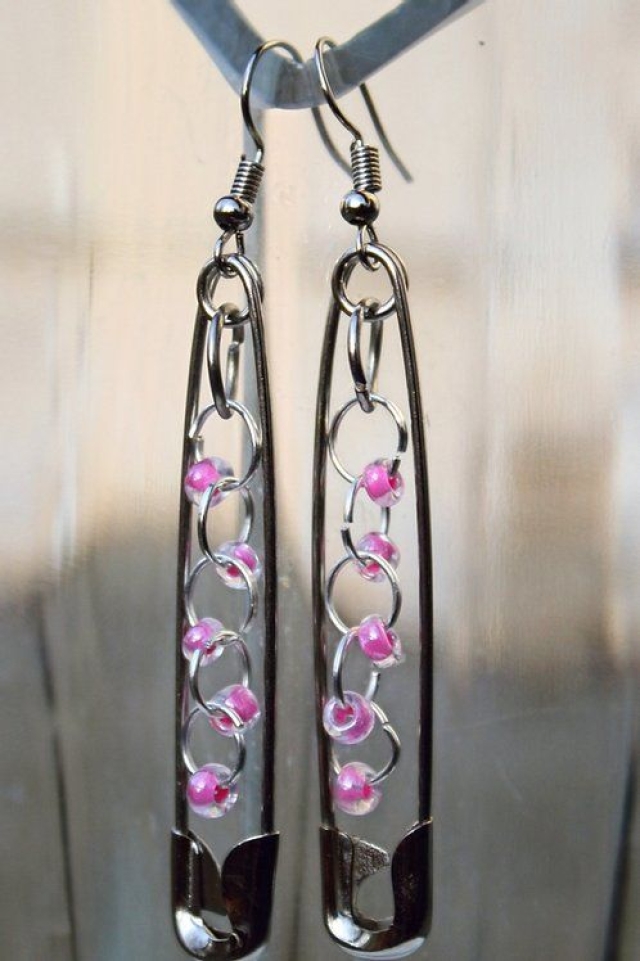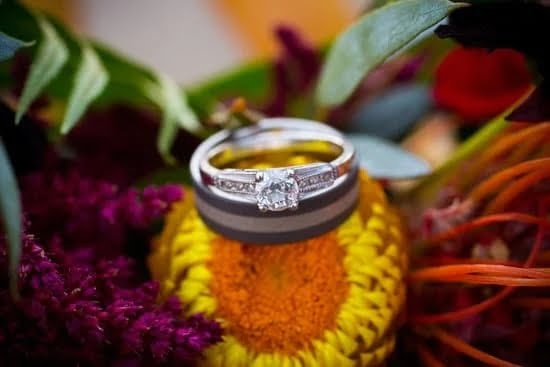The history of Silk Road jewelry begins in China during the Han Dynasty (206 BC-220 AD). During this time and for centuries afterwards, silks, gems, pearls and other natural materials were traded along the route known as the “Silk Road.” The trading route extended all the way to Europe, providing merchants from Asia with access to markets that they had never been able to reach before.
This exchange of goods created a unique style of jewelry that was comprised of different cultures and influences.
Innovations in Silk Road Jewelry Crafting During the reign of the Tang Dynasty (618-907 AD), there were extensive developments in techniques used to create jewelry along the Silk Road. Innovations included refining stone carving tools, using different enamel colors and polishing techniques on gemstones.
Designers also began combining silver with gold, as well as adding metal filigree work and patterns derived from Chinese calligraphy. The combination of technologies from Western and Eastern countries began creating more ornate pieces with vibrant colors, intricate details and complex designs.
Legacy OfSilk Road Jewelry Even centuries after its demise, Silk Road jewelry continues to influence modern pieces today. Even though each piece was heavily influenced by geography: vibrant colors brought by merchants from India; gemstones embedded in gold brought from Egypt; or silver charms imported from Mongolians; all these elements combined resulted in fine works of art that remains unlike any other style produced elsewhere around the world.
Examples of these can be seen in traditional Central Asian silk fabrics still worn today, reflecting an ancient fusion-style fashion that has endured through multiple generations alike.
In-depth Exploration of Early Silk Road Origins and Jewelry Traditions
The Silk Road was an extensive network of trade routes that connected China with the world all the way from Europe in the west to India and Southwest Asia in the east. Spanning thousands of miles, and lasting centuries, these roads brought goods, knowledge, and cultures together, forming a major part of world history. One of the oldest yet vibrant trades on this ancient route was that of precious jewellery.
Early Development
Since the ancient times, jewellery has played an important role in shaping various civilizations across Asia. It is believed that one of the earliest examples of a jewelry workshop along the Silk Road dates back to 500 BC when Scythian nomads set up sites in Central Asian mountain valleys for crafting and trading exquisite accessories using gold extracted from nearby streams.
This spurred an influx of craftsmen who travelled across Chinese dynasties to make special items for royal households using locally available minerals like jade, turquoise and coral. Eventually, this tradition became so associated with Chinese court culture that even today merchants traveling along silk road are seen selling these kinds of traditional pieces at markets.
Increasing Popularity
The fame of jewelry making skill prevelant throughout Asia soon spread further westward throughout Europe, introducing unique designs based on Persian motifs found in cities like Samarkand and Bukhara. During medieval ages many Christian merchants travelling between Constantinople and China began trading sapphire-laden necklaces called “Paterno” – considered by many as one of most famous baubles on silk road.
Over time people also began applying complex techniques like filigree (twisting fine wires into fine patterns ), various enameling processing methods or gilding to their exquisite jewelry making it increasingly popular among buyers both east and west.
Modern Expression
Nowadays we see distinct types of styles associated with every region along silk road route ranging from rustic looking Mongolian jewels covered with polished semi-precious stones; modern Tibetan designs influenced by Buddhism teachings ; intricate Indian pieces embedded with gemstones or more contemporary Chinese works crafted from ultrafine porcelain. A variety of motifs inspired by different cultures still continues to inspire flocks of skilled artisans creating vibrant pieces full or stories connecting one civilization to another through fashion accessories.
Types of Jewelry Crafted Along the Silk Road
The Silk Road was a route that connected Europe and Asia many centuries ago, and acted as a vital trading post allowing goods to travel throughout the known world. It is estimated that this route was in use during between the 2nd century BCE and 15th century CE. During this time, jewelry craftsmanship flourished along the Silk Road due to high demand from merchants trading their wares. Here are some of the categories of jewelry crafted during this period:
- Gold Jewelry – This type of jewelry was crafted from gold, either for ornamental or ritualistic use. Gold bracelets, necklaces and earrings were particularly popular.
- Gemstone Jewelry – Colored gemstones such as lapis lazuli, coral, turquoise and jade were set into intricate pieces of jewelry including rings and amulets.
- Silver Jewelry – Silver jewelry typically featured decorative motifs from ancient Greek and Roman mythology. These designs included human figures with masks, dragons, lions and snakes.
- Glass Beads – Glass beads were very popular amongst traders along the Silk Road for their colorful appearance as well as spiritual value.
In addition to these materials being used in individual pieces of jewelry craftsmanship, craftsmen also began to combine different elements in the same pieces. Gold could be used in conjunction with stones or enameled granulation technique could be applied onto silver pieces to enhance its appearance. With such versatility available in terms of design options, travelers along the Silk Road would often purchase jewelry crafted specifically for them; featuring animals characteristic of their homeland or other cultural symbols.
Major Hubs of Silk Road Jewelry Production and Craftsmanship
An important component of trade and culture along the Silk Road was the exchange of jewelry, and certain cities grew into important hubs for jewelry production, craftsmanship, and trading. The traditional heartland for production and craftsmanship was primarily in China’s Xinjiang region.
There has been evidence that shows jewelry from this area dated back to around 5000 B.C., though, the process of indentification is difficult as many pieces were made in small batches by local artisans familliar with both Chinese and foreign conventions. Throughout the region, each town had its own unique mythology surrounding its jewels; Xibeifu was well-known for their cinnabar earrings, while bronze ornaments crafted in Hami showcased obscure symbols such as those belonging to Turkic religions.
The Fashionable Designs Along The Silk Road
Along all areas of the Silk Road, jewelry design has certain similarities that differentiate them from other countries’ creations: Synthetic stone enhancements which gave blingy sublte charm to necklaces and other pieces seemed to be a favorite for craftscnarns living near to India. Similarly, elaborate tinkering with metals is commonly observed here too: it’s often seen on different items like rings or amulets incorporating intricate filigree work or gold plating.
Goldsmiths played an integral role in creating sophisticated jewelry designs that today are classified by historians as “Silk Road Style”. These pieces would usually include luxurious elements like pearls combined with coral or turquoise stones.
The Impact Of International Influence On Jewelry Crafting
Apart from local influence, international traders also contributed onto the creativity of the artisans along the Silk Road – gemstone-studded chokers were introduced by merchants coming from present-day Turkey while dainty bangles brought from Iran were seen fashionably worn at night markets across Central Asia.
The Byzantine Empire also had a heavy impact on silk road jewelry crafting – signature crosses made with lapis lazuli and red garnets were widely sold across many cities such as Samarkand and Bukhara where manuscripts referenced Turkish craftsmen selling these unique items as souvenirs to foreign travelers visiting these places.
Symbolic Representations Found in Silk Road Adornments
Silk Road jewelry has a long and storied past that is steeped in symbolism. Originating in Asia, this traditional jewelry style dates back thousands of years to the days of the early Silk Road traders. Over time, it has taken on various forms that embody different cultural messages and designs, each based upon the ancient tradition.
Throughout its long journey along the Silk Road, individuals have interpreted the symbolism found in these adornments differently. However, certain motifs remain universal; for instance, many cultures have used floral patterns and intricate line work as symbols of new life and regeneration. Along with flora-based symbols, Silk Road jewelry showcases symbols of protection such as talismans or eagle feathers signifying strength and confidence.
Additionally, tigers are another popular theme commonly seen on Jewelry pieces from the Silk Road regions. The vastness of their empire enabled them to acquire precious stones and stones and hues from far-off lands which they used to craft intricate jewelry sets that spoke about love and relationships between family; something which was especially relevant during those times as arranged marriages were commonplace.
The iconic crescent moon shaped necklace is yet another symbol seen in this style of jewelry as it represents both lightness & darkness existing together in perfect harmony; yin & yang if you may.
- Floral patterned symbols represent new life & regeneration
- Talismans & eagle feathers signify protection & strength
- Tigers embody boldness
- Crescent moon shaped necklaces exemplify yin & yang
Anthropological Insights
Silk Road jewelry is an amalgamation of Persian, Indian, Chinese, and Middle-Eastern styles that were traded along the Silk Road. These pieces typically feature precious metals adorned by detailed engravings and gemstones such as garnet, turquoise, jade, citrine and quartz.
Persian influence
The history of Silk Road jewelry dates back more than two thousand years ago to the Persian empire which stretched from modern-day Iran to Central Asia. Jewelry designs from this period are known for their use of intricate geometric patterns. A characteristic feature of such pieces was to set gemstones in gold or silver and embellish them with filigree (a form of wirework).
This type of workmanship was later adopted by other regions along the trade route and developed into ornamentation featuring geometrical designs interspersed with tiny enamel cabochons. Some pieces also featured raised scenes within which miniature figures were artfully created.
Chinese Influence
As the tradition developed further eastward to China, Mongolian and Tibetan influences began to emerge prominently in the designs. Scrolls, phoenixes, floral elements and cloud motifs started appearing on rings, bangles, earrings as well as large neckpieces for women in favor of geometric patterns prevalent in previous periods.
Bracelets became increasingly ornate showcasing animal heads surrounded by symbols of power like dragons full of authority. Pendants boasting auspicious symbols such as a double happiness symbol depicting a pair of mandarins birds symbolizing matrimony or longevity became popular during this era.
Indian Inspiration
Besides Silk Road traders introducing Indian motifs to Central Asia via caravan routes; Indian kings also ventured further abroad exploring new lands thereby blending Mughal/Sikh Rajputana style with Middle Eastern/Central Asian aesthetics creating what is referred to as ‘Indo-Islamic jewelry’ today. This direction saw gems being mounted in settings inspired by Hindu temple architecture such as jalis (lattice screens).
Traditional Indian colors often featuring turquoise blue or mustard yellow also made their way into jewelry designs while religious symbols like Om arose as a popular iconography at this time signaling spiritual protection for its wearer among other things.
Tracing the Process
The production of silk road jewelry has a long history, with many steps and regional influences that can be tracked throughout history. From the creation of tools to the local influences that decorations carry, tracing the footsteps of those who have produced these type of jewels is a fascinating journey in and of itself.
Ancient Jewelry Making Process
The ancient process behind the design and production of silver Silk Road jewelry involves smelting and casting raw materials into gold or silver oxide sources. This was followed by hand-hammering and filing techniques to create small objects like coins or beads from these materials, as well as shaping more complex designs into intricate pieces.
When it came to the decoration, a variety of different techniques were employed. Etching images onto metal sheets would often be used alongside studding letters in for engraving text onto surfaces. While some regions favored engraving gemstones with symbols thought to bring luck or protection, others relied on filigreea technique involving twisting metals strands around each other once toproduct intricate patterns.
Cultural Influences Behind Decorations
As one moves along the Silk Road route from China through to Iran and Turkey, there are cultural influences present that can easily be traced within various silken roadway jewelry designs found throughout Asia Minor. In many pieces we see an intertwining between Chinese characters and Iranian curlicue script, while colourful embroidery patterns from Central Asia find their way into artworks throughout Iran and Anatolia.
Through both common elements per region as well as cross-cultural fluidity between regions, tracing the exact evolutionary path for any piece of Silk Road bling is considered difficult if not impossible by most historians today; though this does not detract from its unique beauty nor stunning appeal.
Amongst designs such as seals, pendants, buttons, buckles or earrings there are countless potential stories which could lie behind them; one just needs to look closely enough at their complexities to start uncovering them.
Connecting the Past to the Present
Silk Road jewelry has a long and storied history that can be traced back centuries when merchants traveled through Asia, bringing to the world rare and exotic gems. It was the Silk Road that brought these exquisite pieces of jewelry beyond their original borders, before becoming common in the modern era. The Silk Road remnants are now celebrated in modern-day pieces of jewelry that have been crafted with the same intricate details as its predecessors.
Today, modern-day pieces often draw inspiration from this bygone era and incorporate many of the traditional elements such as vibrant coloured stones, delicate designs and natural materials like semi-precious stones as well as gemstones. These designs give a nod to the classic sight of jewels found throughout Central Asia while incorporating contemporary elements such as bold colours and shapes.
The timelessness of Silk Road jewelry allows each piece to stand out and become something truly unique. With Gold, Silver and combinations of both metals being used for various pieces depending on the design – it is understandable why such intricacies continue to captivate all who come across it.
The prevalence and popularity of Silk road style jewelry has only grown over time thanks to their simplistic beauty yet cult-like appeal amongst many demographic types whether middle aged or younger generations looking for something vintage yet timelessly modern fashion accessory. As a result, increasing demand has lead to an abundance of artwork inspired silk road establishments looking to meet those demands allowing such establishments – many family owned – to become more thriving with each passing day.
Their reach expands further than ever making these beautiful works easy accessible to any individual which culminates in more aspiring jewellery designers opening up shop around the world that use this style in its various forms, furthering its growing history even today.

Welcome to my jewelry blog! My name is Sarah and I am the owner of this blog.
I love making jewelry and sharing my creations with others.
So whether you’re someone who loves wearing jewelry yourself or simply enjoys learning about it, be sure to check out my blog for insightful posts on everything related to this exciting topic!





